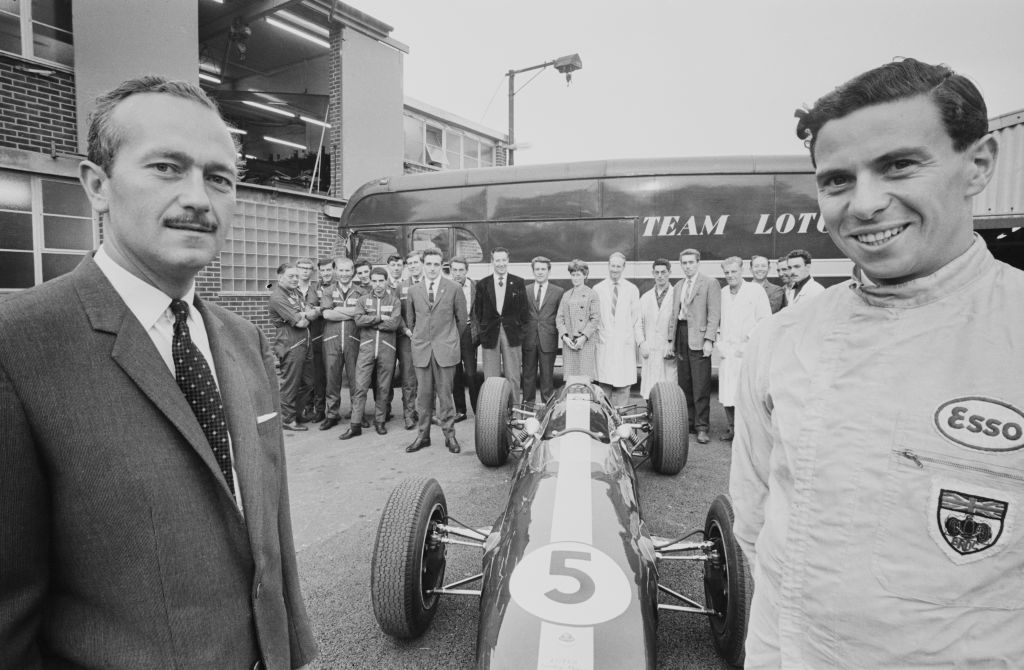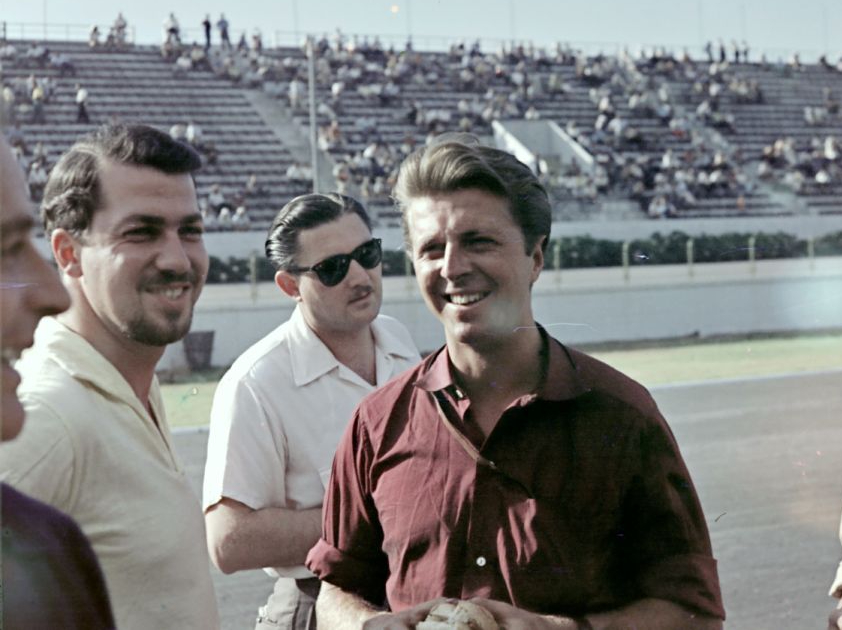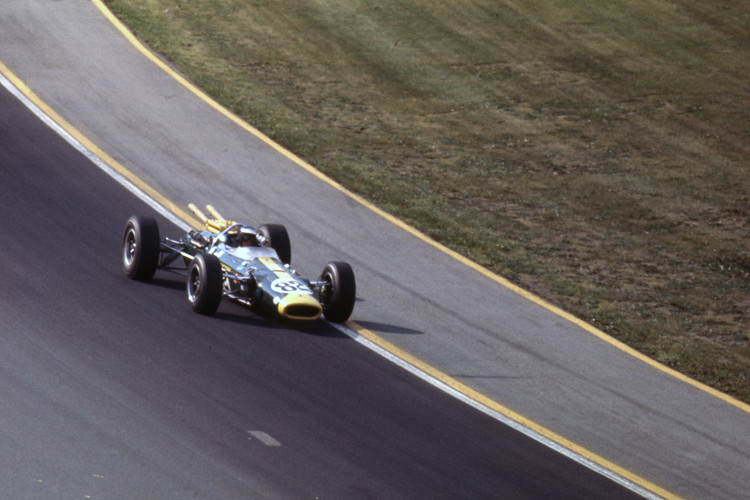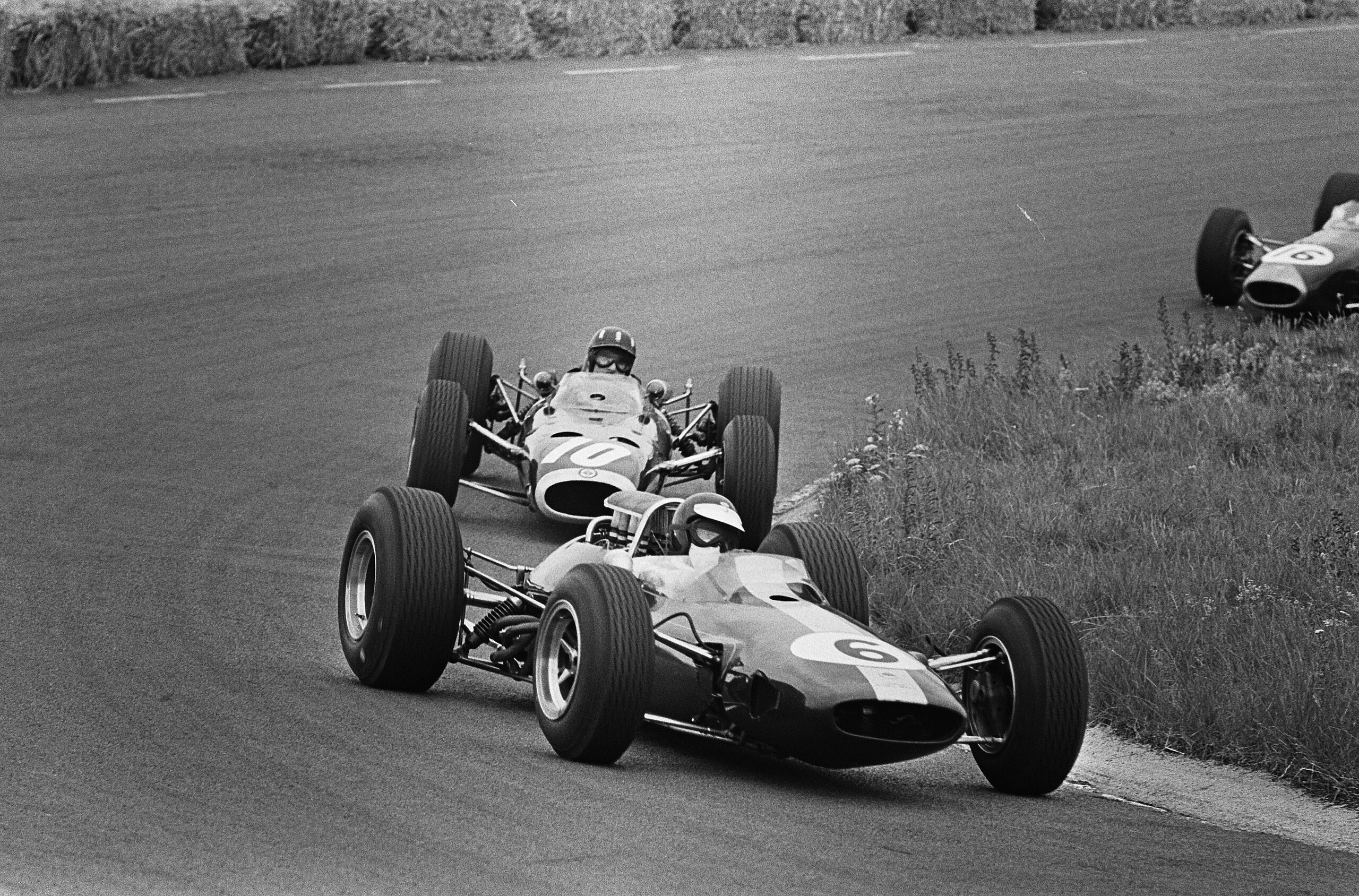Meet James “Jim” Clark
Never heard of Formula 1 driver Jim Clark? Surprisingly, neither have most people. Let’s find out why one of the best drivers in the history of F1 racing is not a household name.

A Lowly Beginning
Jim Clark was the son of Scottish farmers. The only boy amongst five children, he spent the first six years of his life at Kilmany House Farm in Fife County.
Love At First Drive
He fell in love—and his parents were very unhappy about it. They weren’t concerned with whom – but with what. Clark had found his passion. He was enthralled with road racing.
 Jack de Nijs, Wikimedia Commons
Jack de Nijs, Wikimedia Commons
Clark’s Debut
His very first race took place in June 1956. In Crimond, Scotland, he sped through the rote in a DKW Sonderklasse. Immediately, he was considered a “fearsome competitor”.
 Unknown Author, Wikimedia Commons
Unknown Author, Wikimedia Commons
Clinching The Pole Positions
Clark’s first win was just the start of many more. In his career, he won more than 33 pole positions—the most of any other F1 driver. Not only did Clark win the most pole positions but he won an incredible 25 Grand Prix races. It’s been 56 years since his death, and he still holds many F1 records.
The Life-Changing Race
When he was only 22 years old, Clark would place second in a race that would forever change his life. At Brands Hatch, on Boxing Day 1958, Clark drove a Lotus Elite into a second-place finish. The winner, Colin Chapman, who was driving the same type of car, would launch Clark to celebrity status.
 Lothar Spurzem, CC BY-SA 2.0 DE, Wikimedia Commons
Lothar Spurzem, CC BY-SA 2.0 DE, Wikimedia Commons
The Chapman, Clark, Lotus Trio
Chapman gave Clark a spin in one of his Formula Junior cars and offered Clark a position with the Lotus team. Clark accepted. Clark earned his fame backed by Lotus.
Course Chums
Clark was a shy farmer. Chapman, a gregarious engineer, befriended him and soon they were almost inseparable. According to Brendan McAleer, ”they were always huddled…working with the harmony of a pair of long-practiced musicians”.
Renowned, Bit By Bit
Being with Lotus catapulted Clark to fame. But it wasn’t instantaneous. Clark’s first Formula 1 Grand Prix took place in Zandvoort, Netherlands on June 6, 1960. In Lap 49, he was forced to quit the race due to final drive failure.
Scared Stiff
His next few races held little promise. In the 1960 Francochamps Circuit, he placed fifth. After coming face-to-face with two fellow driver fatalities, Clark admitted, “I was driving scared stiff pretty much all through the race”.
 Unknown Author, Wikimedia Commons
Unknown Author, Wikimedia Commons
It Wasn’t All Sunshine And Roses
Clark quickly reached stardom as a racer. But his journey as a celebrity was also filled with many pitfalls. One of those was the disastrous 1961 Italian Grand Prix.
The 1961 Disaster
One of the most devastating accidents in the history of F1 racing occurred in the 1961 Italian Grand Prix. The Monza track was built for “pure speed”. It is flat and dangerously fast. So dangerous that British drivers spurned the invitation to race there.
The Fatal Bump
During the second lap of the 1961 Italian Grand Prix, Clark bumped into German driver, Wolfgang Von Trips, who had slowed down for the curve. This sent Von Trips’ Ferrari airborne, over the guardrail, and into the spectators. Von Trips and 15 people watching the race were killed.
A Horrible Accusation
Because of the Italian Grand Prix incident, Clark was accused of murder. Both he and his Lotus were investigated. Later, the situation was deemed an accident and an “unavoidable collision”.
Indy 500 Rookie Of The Year
Clark’s big break came when he entered the world racing scene in the 1963 Indy 500. Previously, Clark’s racing accomplishments had taken place in Europe. In 1963, he won second place at Indy in his Lotus 25 and received Rookie of the Year honors. Despite this, the 1963 Indy 500 held grim recollections for Clark.
 The359, CC BY-SA 3.0, Wikimedia Commons
The359, CC BY-SA 3.0, Wikimedia Commons
Biased Results
Clark finished the race second, behind American Parnelli Jones. Clark believes he should’ve been the victor—and that the results were biased. American officials for the Indy 500 had stated before the race that any vehicle leaking oil would receive a “black flag” and be automatically disqualified. Jones’ roadster, nicknamed Calhoun, spewed oil from its cracked oil tank for many laps—a spill that resulted in the spinout and eventual crash of American driver, Eddie Sachs.
Why The Bad Memories?
Despite the original ruling and Jones’ race car spewing oil, he was not disqualified. Clark was especially bitter about this as Jones ended up winning the race. Clark’s good pal, Colin Chapman, was quite vocal about the USAC verdict, and accused them “of being biased because Clark and Lotus were a British team with a rear-engine car”.
Another Oil Leak Loss
Two years after losing the Indy 500 to Parnelli Jones, Clark suffered another loss due to a driver’s engine leak. This time, English driver John Surtees’ engine leaked, causing damage to Clark’s suspension and ultimately causing tire failure. Clark was devastated. He had been within a few laps of keeping his World Championship title.
The First And The Only
The following year proved to be an extremely successful one for Clark. In 1965, he did what no other driver in history had, or has to this day, done: He clinched the Indy 500 and the F1 title in the same year.
Bye, Bye, Lotus 33
After 1966, Clark’s roadsters couldn’t keep up their competitive edge. The Fédération Internationale de l'Automobile (FIA) made the decision to regulate 3-litre engines. It wasn’t until he started operating a newer 3-litre Lotus 43, with a BRM H16 engine, that Clark started to once again win titles.
 Lothar Spurzem, CC BY-SA 2.0 DE, Wikimedia Commons
Lothar Spurzem, CC BY-SA 2.0 DE, Wikimedia Commons
An Adaptable And Skilled Driver
Clark is known to be one of the most adaptable drivers of all time. He quickly adjusted to whatever car setup and prototype he was given. He had an unbelievable 70% winning ratio. This is extremely impressive considering even greats like McLaren’s Alain Prost and Ayrton Senna had rates of 43.75% and 50%, respectively.
 Eric Koch, CC BY-SA 3.0 NL, Wikimedia Commons
Eric Koch, CC BY-SA 3.0 NL, Wikimedia Commons
71-Year Record
Clark’s record of having the highest percentage of laps in a season’s lead was held for 71 years—and was only broken in 2023 by then-26-year-old Belgian and Dutch driver Max Verstappen.
He Even Wrote A Book
Jim Clark even wrote an autobiography. After his first World Championship, Clark penned his book called Jim Clark at the Wheel. A used first-edition copy still sells for about $113 USD.
 Harry Pot, CC BY-SA 3.0 NL, Wikimedia Commons
Harry Pot, CC BY-SA 3.0 NL, Wikimedia Commons
They All Say Great Things
Argentinian Juan Manuel Fangio was a fearsome competitor to Jim Clark. He raced his way to five World Championships—and he has only good things to say about his rival, Jim Clark. Fangio declared Clark “the greatest driver ever”. British driver and three-time World Champion Jackie Stewart agrees. Clark is very highly regarded in his sport.
 Lothar Spurzem, CC BY-SA 2.0 DE, Wikimedia Commons
Lothar Spurzem, CC BY-SA 2.0 DE, Wikimedia Commons
And Above All, He Was A Gentleman
According to Swarez, Clark “was a gentleman, a racing driver of unparalleled talent, and gave us some of the most memorable motor racing moments of all time”. And yet many of not heard of this F1 driver.
Why Haven’t We Heard Of Him?
Clark was talented and skilled and had a long list of accolades. He wrote a book about himself. In his races, Clark was in first place for 70.3% of the laps. Why, then, is he not as well-known as French champion Alain Prost or German driver Michael Schumacher?
His Demise
Perhaps the biggest reason for his low profile is the fact that he died rather young. Jim Clark was only 32 years old when his life ended tragically in a racing accident.
The Fateful Day That Shouldn’t Have Happened
Originally, Clark was scheduled to participate in a different race on April 7, 1968. The race he had first registered for was Brands Hatch’s BOAC 1,000 km in England. However, due to contract negotiations with Firestone, it was determined that instead, he would compete in Germany’s F2 Deutschland Trophae.
 picture alliance, Getty Images
picture alliance, Getty Images
Fifth Lap Crash
It was in his fifth lap that complications occurred. Clark was sent hurling off the track and crashed into trees where he broke his neck and suffered the head trauma of a broken skull. Unfortunately, he didn’t last to reach the hospital.
 picture alliance, Getty Images
picture alliance, Getty Images
Devastated
Fellow drivers, fans, family members, and racing staff were shocked and horrified. Colin Chapman grieved the premature loss of his bestie. British driver and owner, Graham Hill, mourned the loss of Clark and his big grin. Chris Amon, one of Clark’s colleagues from New Zealand, was convinced that a great leader was lost on April 7, 1968. Amon asked: “If it could happen to him, what chance do the rest of us have?”
What Happened
On-the-scene inspectors believe the problem stemmed from Clark’s rear tire losing air. But a deflating tire wasn’t the only theory put forth as to why Clark’s Lotus 48 veered off track.
What Really Happened
Other theories suggested that Clark’s Cosworth engine had suffered a malfunctioning mechanical metering unit. Whatever other ideas were suggested, almost all of Clark’s fellow F1 drivers argued that the true cause of the crash couldn’t have been driver error. They all believed it impossible with Clark’s “sublime talent and skill”.
 Rtsanderson, CC BY-SA 3.0, Wikimedia Commons
Rtsanderson, CC BY-SA 3.0, Wikimedia Commons
Memorials
Jim Clark left a legacy in the world of racing. There are several places where fans can find evidence of his life, career, and successes. His headstone in Chirnside, Berwickshire lists him as a farmer before a racer. Another memorial is located close to the track where he raced his final race. Near the Hockenheimring circuit is a simple stone that, once lost amongst weeds, has been moved closer to the fateful track.
 Jernejl, CC BY-SA 3.0, Wikimedia Commons
Jernejl, CC BY-SA 3.0, Wikimedia Commons
A Third Tribute
The third spot where F1 fans can pay tribute to this racing hero is in Fife, Scotland, where there is an impressive life-size statue of Jim Clark. Placed beside a stream in his birth village, Kilmany, is the bronze figure of Clark, mid-saunter with hands in the pockets of racing overalls.
 Euan Nelson, CC BY-SA 2.0, Wikimedia Commons
Euan Nelson, CC BY-SA 2.0, Wikimedia Commons
An Interactive Museum
Along with memorials and statues, Jim Clark’s racing accomplishments can also be observed at The Jim Clark Motorsport Museum in Duns, UK. Over 10,000 visitors have gathered to interactively experience exhibits and to get up close to his 1965 Lotus Cortina, and the iconic Lotus 38 in which he won the 1965 Indy 500.
 Victuallers, CC BY-SA 4.0, Wikimedia Commons
Victuallers, CC BY-SA 4.0, Wikimedia Commons
Clark’s Many Other Awards
Many prestigious awards have been bestowed upon Jim Clark, both while he was alive and afterward. Not only was he ABC’s 1965 Athlete of the Year but he has also been inducted in the International Motorsports Hall of Fame.
 Joop van Bilsen, Wikimedia Commons
Joop van Bilsen, Wikimedia Commons
Order of the British Empire
Along with this achievement, Clark posthumously received the Order of the British Empire, which is one of the highest designations for those who “have rendered or shall hereafter render important services to Our Empire”.
 Jack de Nijs, Wikimedia Commons
Jack de Nijs, Wikimedia Commons
Not Forgotten
Although many have not heard of one of the most epic F1 drivers of all time, Jim Clark remains in the minds of many. Annually in Berwickshire, there continues to be the Jim Clark Rally—a motorsport race run by a horde of volunteers. Also every year, the Association of Scottish Motoring Writers allots the Jim Clark Memorial Award to a Scot who has promoted and played a large part in the sport.
Despite Anonymity, Clark’s Memory Is Alive
Despite being gone for over five decades, Clark is still considered to be one of the best drivers in the history of F1 racing. A study by Andrew Bell in 2020 placed Clark second in driver skill, behind Argentinian Juan Fangio—the very driver who referred to Clark as “the greatest driver ever”.
Forget-Me-Not
Clark may not be a household name, but his accomplishments are incredible in the world of F1 racing. And now you know who he is—and why he shouldn’t be forgotten.





























